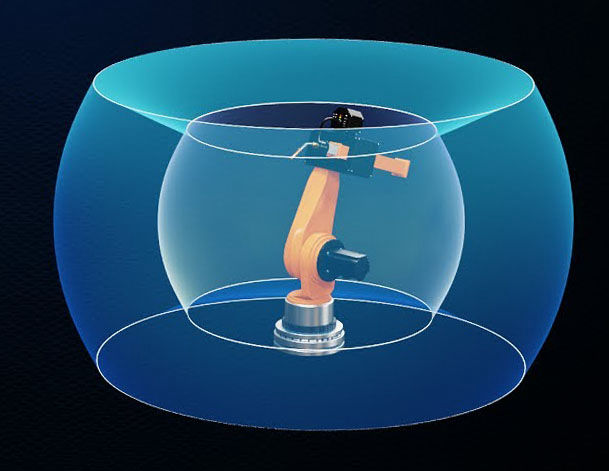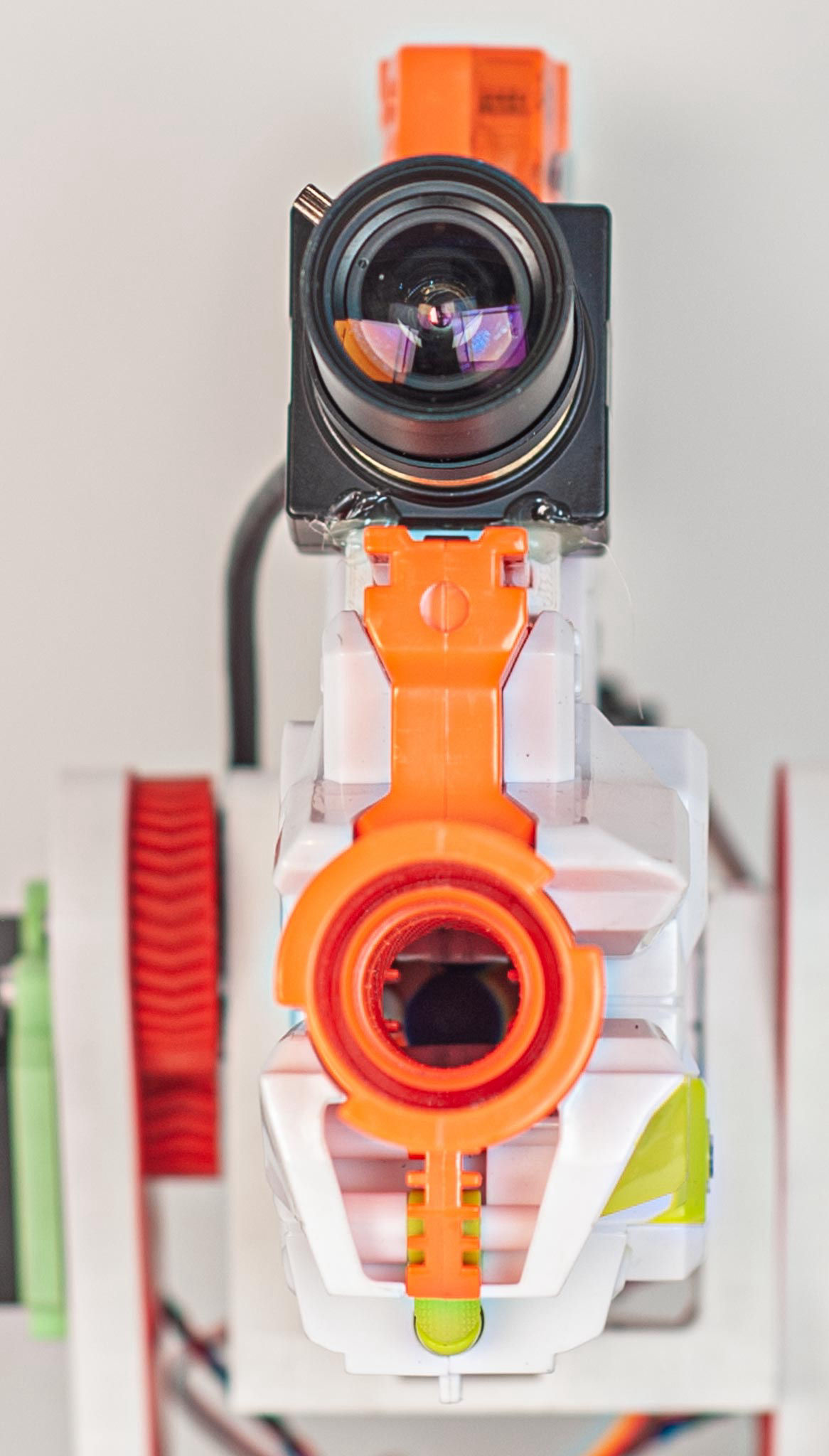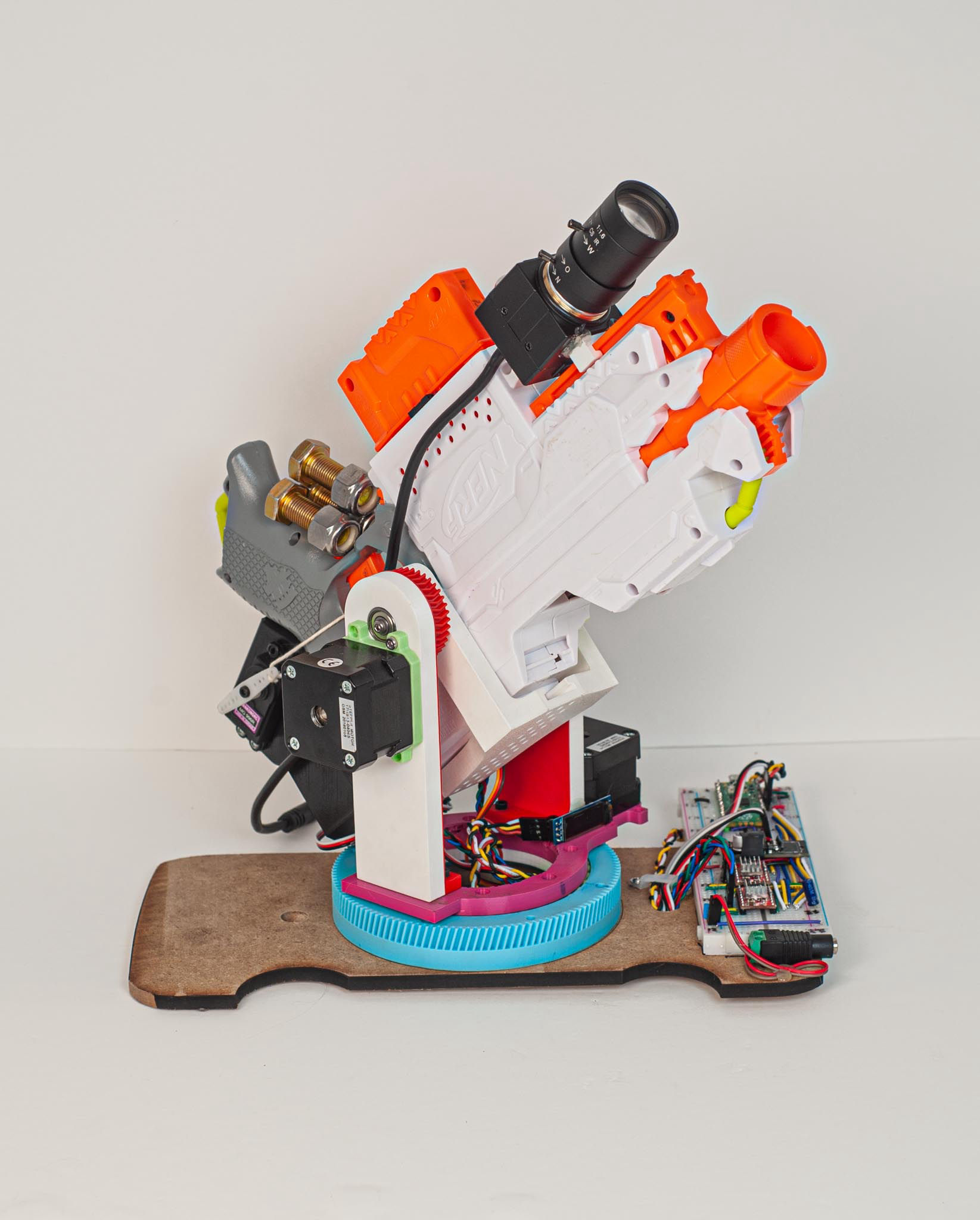The Challenge
Traditional sentry guns face several limitations:
- Complex manual setup requirements
- Lack of autonomous target identification
- High costs limiting accessibility
- Inflexible targeting parameters
- Limited educational application potential
Developing a computer vision system for autonomous target acquisition and tracking, creating an intelligent platform that can identify and engage targets in real-time.
Target detection in optimal conditions
Average time from detection to aiming
Hit rate on moving targets at medium range
Traditional sentry guns face several limitations:

Development of a computer vision-based system that:

Computer Vision Detection System
The physical platform features a sophisticated mechanical system designed for precision and reliability:
The system utilizes a Raspberry Pi as the central processing unit, running Python-based computer vision algorithms through OpenCV. The camera feed is processed in real-time using a sophisticated detection pipeline.
The detection process involves background subtraction to isolate moving objects, contour detection to identify human-shaped silhouettes, Kalman filtering for smooth target tracking, and decision algorithms to determine targeting priority.

Servo-Controlled Aiming Mechanism